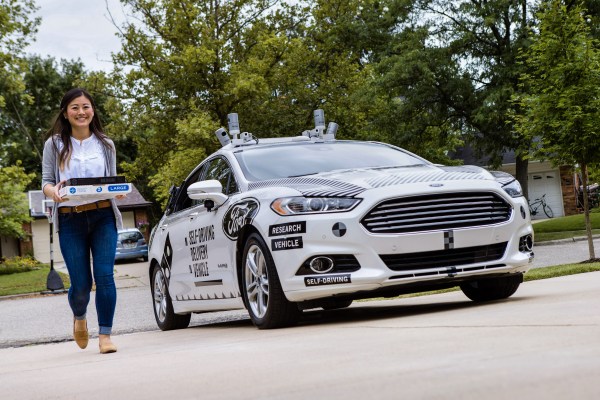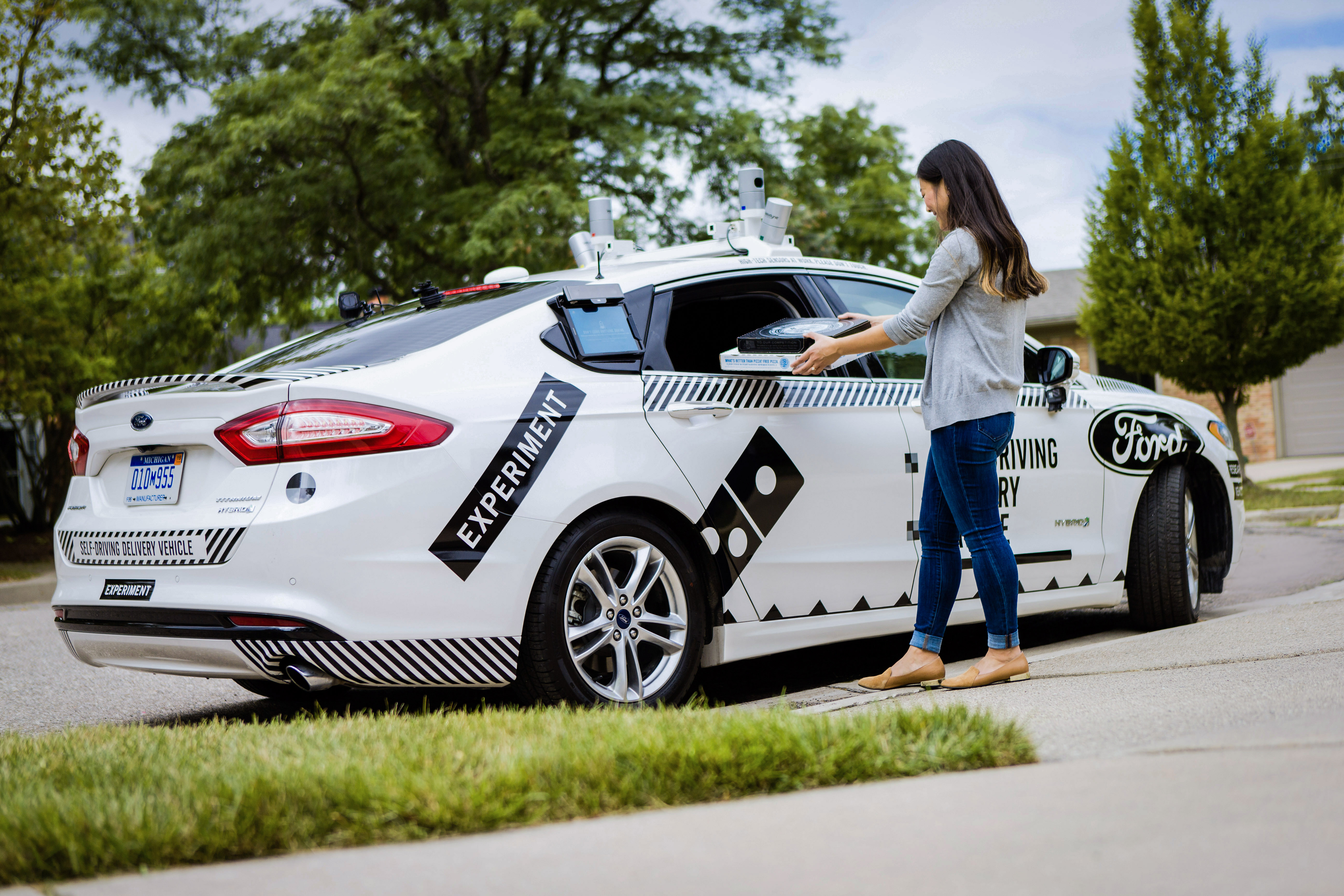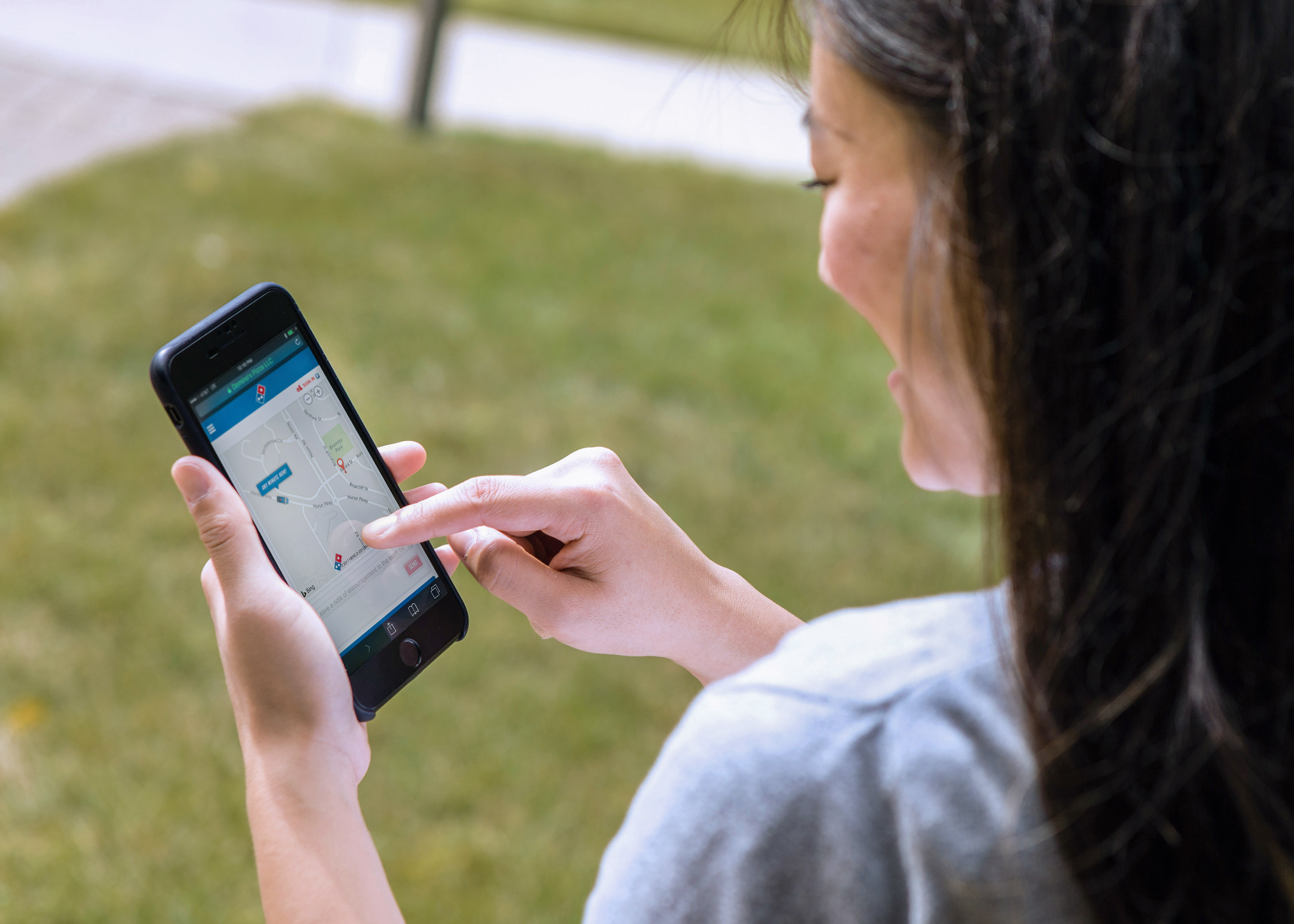Ford and Domino’s are teaming up on a research trial that will see Ford cars equipped with self-driving tech delivering pizzas to regular consumers, as a way of figuring out how everyday people will react to, and interact with, autonomous service vehicles in the future.
Ford Fusion Hybrid Autonomous Cars will be used in the test, outfitted with pizza containers created by Domino’s partner Roush Enterprises designed to keep the pizzas warm en route, and to unlock when a customer types in their unique delivery code. The vehicles will be available to randomly selected Domino’s customers who order pizza in the Ann Arbor, Mich. area, with the ability on the customer end to opt in to receiving a delivery via AV when they’re selected.
Both Ford and Domino’s will be using the test to see how people react to receiving pizzas via self-driving vehicles. Ford considers the customer and user experience aspects of autonomous driving technology a core part of the overall platform it’s developing, Ford Autonomous and Electric Vehicles VP Sherif Marakby tells me, and it’s using this real-world trial to test its assumptions and help it develop that aspect of the product it hopes to commercialize in just a few years’ time.
“The unique thing is that we’re doing this ethnographic research in parallel to developing the AV tech itself,” Marakby said. “The reason we’re doing that is that we’re going to learn things we didn’t know, and we want to have the opportunity from a timing perspective to incorporate these changes into the car, or the interface to the car and the consumer interaction.”
This isn’t something that Ford is necessarily used to – it’s done a lot to improve its cars from a core technology perspective over the years, but it has decades of experience with its own categories of consumer to know what they want to some degree in each successive generation. With AVs, there’s a lot more up in the air.
“Usually, in the auto business, you know the customer and you’re planning certain things for the consumer,” Marakby explained. “In this case, we’re still trying to understand, and we’re working with partners who understand the consumer and figuring out what we need to do to the vehicle in parallel as we’re developing the tech.”
Domino’s and Ford have worked together on a number of projects in the past, including in building a way to order pizzas via Ford’s in-car SYNC software and apps platform. Their pre-existing relationship led to conversations around the potential for AVs in food delivery.
“The two companies decided to work together a few months ago,” Marakby told me. “Ford is developing the autonomous vehicle technology, and Domino’s is actually really focused on the technology aspect of how to improve the delivery business. I think there’s general understanding that autonomous vehicles can enable a lot of things for delivery that will make the whole delivery process easier, simpler and maybe even more user-friendly.”
That’s how the companies then decided to set up the “ethnographic research” project they’re beginning now, as Marakby describes it. Its aim is to figure out what would be needed in a go-to-market strategy in order to satisfy consumer needs and demands from an autonomous service like this one.
[gallery ids="1532762,1532761,1532760,1532758,1532756,1532757,1532754,1532753,1532752,1532751,1532750"]
Marakby reiterated that it’s key to their strategy that Ford isn’t waiting for the autonomous component to be road-ready to do this, and that’s by design: The automaker believes that a firm understanding of what the consumer wants in terms of user experience when interfacing with AVs is just as important and being able to navigate real roads.
Ford’s goal is still to build, at scale, autonomous fleets capable of servicing industries like this one in time for the 2021 time frame, Marakby says, and so figuring out what people want in a delivery or transportation AV, and doing it now while details like vehicle design are still being finalized is important.
The autonomous cars used in this trial will still have someone behind the wheel – safety drivers will be present to ensure everything goes well and to observe, and take over when necessary. But the real test here isn’t for the drivers, or even the self-driving aspects of the self-driving cars used – it’s all about the end user, and what they think of taking delivery of their piping hot pizza pies from something other than another person.


